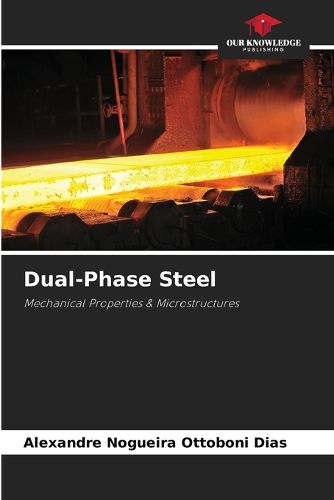Readings Newsletter
Become a Readings Member to make your shopping experience even easier.
Sign in or sign up for free!
You’re not far away from qualifying for FREE standard shipping within Australia
You’ve qualified for FREE standard shipping within Australia
The cart is loading…






This study presents the microstructural characterization and evaluation of the mechanical properties of steel with different dual-phase microstructures, obtained by tempering ferritic-pearlitic LNE 500 steel. Its intercritical region and existing phases, as a function of temperature, were determined using the "THERMOCALC" software. With these results, samples were tempered from different temperatures to obtain varying volumetric fractions of ferrite and martensite. Microstructural characterization was performed using qualitative and quantitative metallography. The mechanical properties were determined by means of hardness, impact, and uniaxial tensile tests, which provided parameters such as yield strength, tensile strength, and total and uniform elongation, in addition to the work hardening exponent and the resistance coefficient of the treated steel. Results showed that heat treatments produced different microstructures. The greater presence of the martensitic phase contributes to improving the mechanical properties of hardened steel, such as hardness, impact energy absorbed, and mechanical strength without loss of ductility.
$9.00 standard shipping within Australia
FREE standard shipping within Australia for orders over $100.00
Express & International shipping calculated at checkout
Stock availability can be subject to change without notice. We recommend calling the shop or contacting our online team to check availability of low stock items. Please see our Shopping Online page for more details.
This study presents the microstructural characterization and evaluation of the mechanical properties of steel with different dual-phase microstructures, obtained by tempering ferritic-pearlitic LNE 500 steel. Its intercritical region and existing phases, as a function of temperature, were determined using the "THERMOCALC" software. With these results, samples were tempered from different temperatures to obtain varying volumetric fractions of ferrite and martensite. Microstructural characterization was performed using qualitative and quantitative metallography. The mechanical properties were determined by means of hardness, impact, and uniaxial tensile tests, which provided parameters such as yield strength, tensile strength, and total and uniform elongation, in addition to the work hardening exponent and the resistance coefficient of the treated steel. Results showed that heat treatments produced different microstructures. The greater presence of the martensitic phase contributes to improving the mechanical properties of hardened steel, such as hardness, impact energy absorbed, and mechanical strength without loss of ductility.